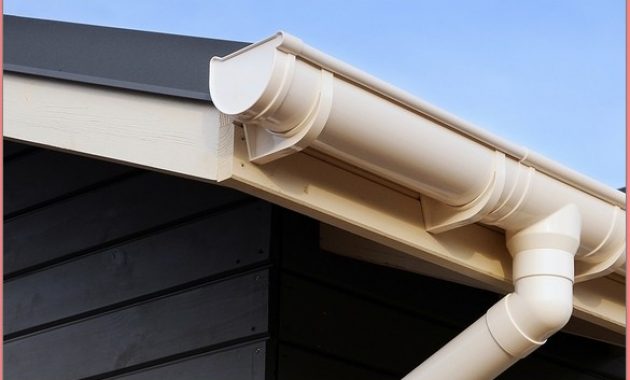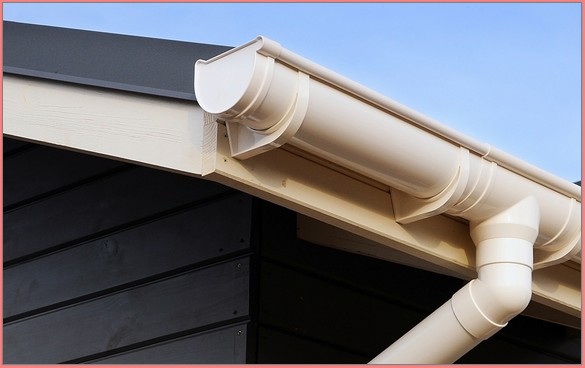By all means, rainwater is good, it’s great, and it’s wonderful. But just like most of the other elements, the rain can be a nightmare in the day. With respect to the property, roof gutters protect your home from water damage that may be caused by this vital element. Rainwater can cause water damage through roofs and gutters alike, especially from rusting and leaks. Saying goodbye to water damage involves looking out for the roof gutters as much as the rest of your home. But then again, buying new roof gutters is rarely a walk in the park. This is mostly because there’s a myriad of gutter options to choose from in terms of materials, types, and styles. The best gutters for you will depend on a number of factors, including cost, material, style, and type. Here are a few tips on buying new roof gutters.

1. Decide Between Sectional and Seamless Gutters
Before approaching your purchase, you will want to decide whether you want sectional or seamless gutters. These are the two most common types of roof gutters based on structure.
Sectional gutters:
As the name suggests, these gutters comprise of sections or pieces that are glued together to form a custom length. The most significant upside about them is that they’re generally inexpensive. However, sectional gutters tend to develop leaks at the joints with time.
Seamless gutters:
On the other hand, you can tell from the name that seamless gutters do not have joints. If they do, the joints are made during installation rather than at the point of manufacture. They are basically sold as single gutters custom-made to suit your roofing needs. The fact that they have fewer seams reduces the chances of leaks occurring. This is one of the main reasons seamless gutters are incredibly popular in both residential and commercial premises.
2. Choose a Good Material
Today, rain gutters are available in a variety of material options. The right roof gutter for you based on the material will depend on your preferences, both immediate, and long term. To make the right choice, start by asking yourself which material is the best for you? Well, in an alphabetic order, some of the most common roof gutter materials include the following:
• Aluminum
• Copper
• Galvanized steel
• Wood
• Vinyl
Aluminum:
This one is the most common gutter material by popularity. This is mostly because of it’s lightweight, inexpensive, and rust-proof characteristics. It is also available in a wide range of colors and finishes.
Copper:
A lightweight, rust-proof, highly durable material that is perfect for period homes. These gutters can be a bit pricey, though.
Galvanized Steel:
This material is fairly resistant to rusting (20 years minimum). It is also quite sturdy and durable, making it a perfect choice for a property in extreme weather-prone areas.
Wood:
This material is perfect for creating architectural gutters with a natural touch and feel. However, wood gutters have lost popularity over the years due to a couple of downsides. Some of these include the fact that they’re expensive, heavy, and more demanding when it comes to maintenance. Additionally, wood may require repainting over time and is more prone to damage by the elements. Warps, cracks, and twisting are some of the most common downsides of using wood gutters. Nonetheless, less expensive mill wood gutters are also available.
Vinyl:
Vinyl roof gutters are the most affordable option on the market. This is probably due to the low durability factor and low weather resistance.
3. Choose a Gutter Style
The two most common types of gutters by style are the K-style and the half-round gutters. While the former takes a trough shape, the latter takes a U shape. K-style gutters are more commonly used today compared to the half-round gutters. Your choice will largely depend on the final aesthetic look you want for your home as both roof gutter styles provide excellent drainage.
4. Gutter Size
The tips on buying new roof gutters cannot be complete without talking about gutter sizing. It is important to size your gutters according to the expected amount of rainwater and the size of your roof. For instance, an inch of rainfall would amount to 550 gallons of water when hitting a 1000-sq.ft roof. The rule of thumb is to size your gutters based on the maximum expected amount of rainfall. In places where a higher amount of rainfall is expected, the roof gutters should be bigger and wider. Gutters can be anywhere between 4 and 8 inches wide, with 5 to 6-inch gutters being the most common.
With the tips on buying new roof gutters above, higher chances are that you’ll have it easier and less frustrating. It is also important to make sure you have some gutter downspouts installed to aid the flow of water. Having your roof inspected for problems regularly is also paramount.
